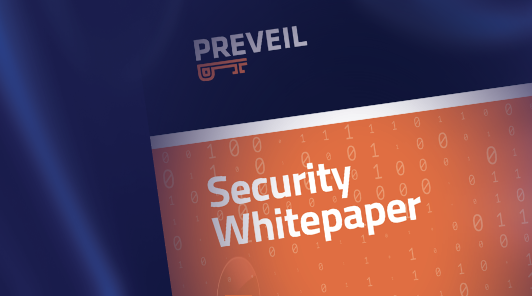PreVeil: The Gold Standard in Cryptographic Security
Breaches are inevitable. PreVeil’s end-to-end encryption ensures your data stays protected—even when servers, admins, and passwords are compromised.
Security Relies on Perimeter
Defense – And It Always Fails
Attackers Always Get In
Every major breach—from Microsoft Exchange to the US Federal Government proves that even the best defenses fail.
Passwords Are the Weakest Link
Passwords can be guessed, stolen, or phished—leading to easy system compromise.
Admins Are a Single Point of Failure
Traditional security gives administrators full access, making them a prime target for hackers.
Cloud Providers Can Be Breached
If your provider can access your data, so can attackers when they break in.
“Traditional perimeter-based network defenses with multiple layers of disjointed security technologies have proven themselves to be unable to meet the cybersecurity needs…”
— National Security Agency (NSA)
A Zero Trust Security Model That Eliminates Legacy Weaknesses
End-to-End Encryption Secures Data at All Times
Your data is encrypted on your device and only decryptable by recipients, ensuring security even if servers are breached.
Passwords Are Eliminated
Your login is protected by encryption keys, making phishing, guessing, and remote login attacks useless.
Admins No Longer Pose a Risk
PreVeil eliminates single points of failure by securing admin access with cryptographic Approval Groups
Cloud Providers Cannot Compromise Your Data
Even if breached or subpoenaed, PreVeil’s zero-trust encryption prevents access to your information.
“The Zero Trust model eliminates trust in any one element, node, or service by assuming that a breach is inevitable or has already occurred…”
— National Security Agency (NSA)
The Science Behind PreVeil’s Security

True End-to-End Encryption Vs. Encryption in Transit and Rest
Encryption in transit and at rest decrypts data on the server, making it vulnerable to breaches. PreVeil’s end-to-end encryption ensures data is never decrypted on the server—only recipients can access it, eliminating server-side risk.
Cryptographic Identity
vs. Passwords
PreVeil replaces vulnerable passwords with unbreakable cryptographic keys, eliminating phishing and credential theft risks.
How Approval Groups
Protect Admins
PreVeil’s Approval Groups cryptographically distribute trust across a predetermined set of admins, so that no single person can compromise the entire enterprise. Admins can still gain access to decrypted corporate data for governance or compliance, but only after receiving authorization from approvers.

Whitepaper
PreVeil Security White Paper
PreVeil fully discloses its security model and architecture, adhering to best practices for Modern Zero Trust Systems. Transparency is a cornerstone of robust security, ensuring that defenses are not based on obscurity but on proven cryptographic principles.
Security-First Design
Naturally Simplifies Compliance
Regulatory compliance frameworks such as DFARS, ITAR, and CMMC are designed to enforce stronger security, but traditional security models make compliance complex and costly. PreVeil’s zero-trust architecture and end-to-end encryption naturally align with compliance requirements, reducing the burden on organizations.
End-to-End Encryption Meets Data Protection Mandates
PreVeil’s encryption ensures Controlled Unclassified Information (CUI) and other sensitive data remain inaccessible, even if servers are breached.
Eliminating Passwords Reduces Identity and Access Risks
Cryptographic authentication removes the primary attack vector regulators aim to mitigate—compromised credentials.
Approval Groups Enable Enforceable Access Controls
Compliance requires strict access controls- PreVeil enforces them cryptographically rather than relying on administrators or policy enforcement alone.
By implementing security-first principles, organizations not only achieve compliance but also ensure stronger, real-world protection against breaches.
The Most Secure Way to Communicate
The world’s most secure communication systems, like Signal and WhatsApp for messaging, rely on end-to-end encryption and zero-trust principles. PreVeil applies these same principles to email and file sharing—the preferred means of communication in enterprises.

